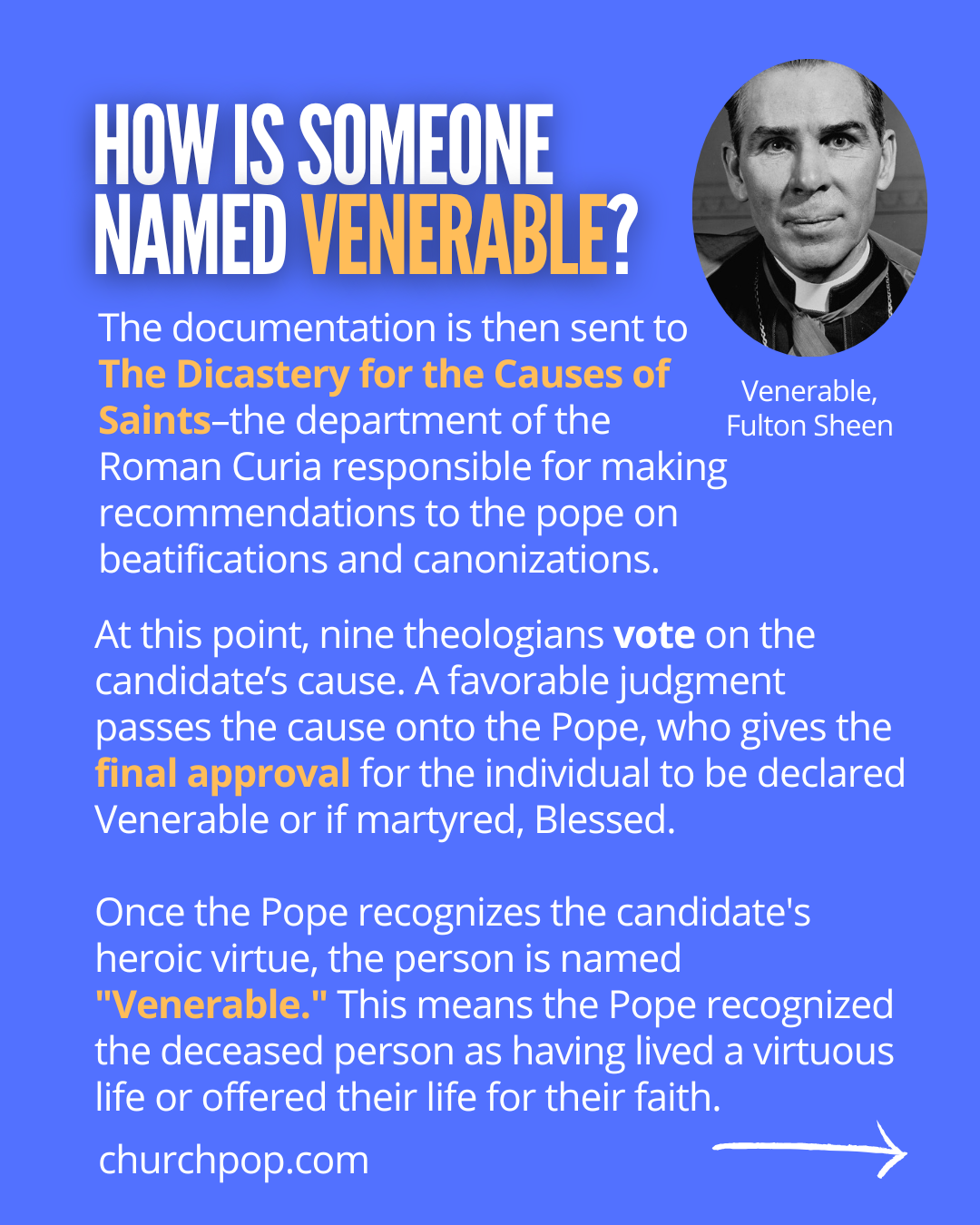We are all called to sainthood!
But how is a saint officially recognized in the Catholic Church?
Traditionally, five years must pass after the candidate's death before the canonization cause can begin. The Pope can excuse this waiting period, which he did with Saints Mother Teresa and Pope John Paul II.


How is someone declared a Servant of God?
The process begins when a petitioner asks the diocesan bishop to begin the investigation into the life of the particular person, which could ultimately lead to their canonization. The bishop may also begin their own cause.
Once a cause opens, the individual is called a Servant of God.
A proper examination is followed at a diocesan or eparchial level. The Church then forms a tribunal, calls on witnesses, and looks at documents written by the candidate.

How is someone named Venerable?
The documentation is then sent to the Dicastery for the Causes of Saints–the department of the Roman Curia responsible for making recommendations to the pope on beatifications and canonizations.
At this point, nine theologians vote on the candidate’s cause. A favorable judgment passes the cause onto the Pope, who gives the final approval for the individual to be declared Venerable or if martyred, Blessed.
Once the Pope recognizes the candidate's heroic virtue, the person is named "Venerable." This means the Pope recognized the deceased person as having lived a virtuous life or offered their life for their faith.

How is someone declared "Blessed"?
Next is beatification.
According to the USCCB,
“Beatification -- the second stage in the process of proclaiming a person a saint; occurs after a diocese or eparchy and the Congregation for the Causes of Saints has conducted a rigorous investigation into the person's life and writings to determine whether he or she demonstrates a heroic level of virtue, offered their life, or suffered martyrdom.”
To be recognized as “Blessed,” one miracle through the intercession of the candidate is required. However, a miracle is not required for a martyr’s beatification, just their canonization.
A miracle is considered something that occurs by God’s grace through the candidate’s intercession which is inexplicable by science. The required miracle must be proven through canonical and scientific investigation.
According to EWTN,
“The alleged miracle is studied by scientific and theological commissions in the diocese in which it is alleged to have occurred.”
The person is declared "Blessed" once the Holy Father approves the Decree of a Miracle. This approval affirms the power of the candidate’s intercession and their union with God after death!

How are saints canonized?
To become a canonized saint, a second miracle is required.
This process is the same as it was for the miracle leading to their beatification.
Once a second miracle is approved, the Rite of Canonization by the Pope can occur. Through this, the person is elevated to universal veneration in the Church.
According to EWTN,
“By canonization the Pope does not make the person a saint. Rather, he declares that the person is with God and is an example of following Christ worthy of imitation by the faithful.”
In conclusion, we are all called to sainthood and encouraged to get to know these powerful intercessors.
According to the Catechism of the Catholic Church (962),
"We believe in the communion of all the faithful of Christ, those who are pilgrims on earth, the dead who are being purified, and the blessed in heaven, all together forming one Church; and we believe that in this communion, the merciful love of God and his saints is always [attentive] to our prayers"


